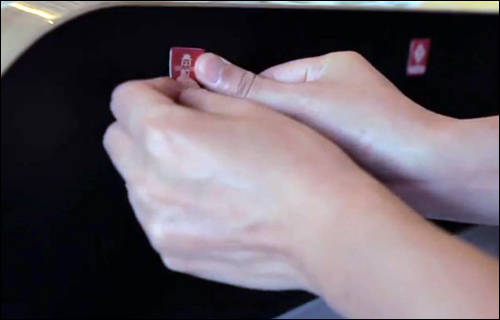For one month this summer, Near Field Communication (NFC) technology transformed a seemingly ordinary table at a McDonald’s restaurant in Singapore into a go-kart racetrack for children equipped with NFC-enabled phones. McDonald’s Singapore piloted the NFC-based Happy Table at its Yishun location during July and August of this year, in order to entertain children awaiting food, or those whose parents had not yet finished their own meals. With the system in place, customers’ cell phones became cars on a racetrack that was displayed on the phone’s screen via NFC tag reads. The children viewed their progress on the phone screen while hovering the phone over the table and following the game’s directions to organize a party for characters at McDonaldLand.
Based on the pilot’s results—which were positive, according to Daniel Lee, McDonald’s director of digital projects for the Asia Pacific/Middle East/Africa region—the fast-food chain is now determining where the technology might be installed in the future at restaurants throughout Singapore, Japan or other parts of Asia.

Singapore’s 125 McDonald’s located are faced with a challenge: Although play areas for children are among the more popular aspects of the franchise’s restaurants worldwide, space is at a premium on the small Asian island. As such, installing jungle gyms or even a limited play area within a small restaurant is often unrealistic. Therefore, McDonald’s has been researching technological solutions that could provide unique entertainment for children while their parents enjoy their meals. One example is a projector providing games that can be played on a wall—similar to a Nintendo Wii game, Lee explains, only much larger.
However, Lee says, the restaurant was also interested in deploying NFC technology. The proliferation of Samsung Android phones with built-in NFC technology, he notes, is quite high in Singapore. Therefore, Lee and his research team began investigating ways in which children could use an NFC application to be entertained by their parents’ phones. The resulting game, developed and provided by DDB Group Singapore, was created by attaching several dozen NFC RFID tags to the underside of a table measuring approximately 1 foot by 3 feet.
To play, users must download the free McParty Run app (provided by DDB) from Google Play onto an NFC-enabled phone. DDB attached a variety of off-the-shelf NFC tags to the tables’ undersides. Each tag’s unique ID number is recognized in the game software as a specific section of the track. To accomplish this, each tag ID is assigned a specific type of track section in the software. Some tags designate straight sections of track, while others are either a right bend, a pit stop or a loop-de-loop. As long as the phone’s RFID reader is within range of the tag, the phone display will depict the appropriate track section and the child can pass the phone over the track as though it were a car. Based on transmission strength, the software then determines the exact position of the “car”—for example, a weak signal indicates that the phone is veering away from the track, and that action is displayed on the screen. If the phone falls beyond the tags’ read range, it is depicted as falling off the track.
At some locations along the track, the tags also provide other game play. For instance, a player can capture treats, such as sundaes or apple pies, as well as fight McDonald’s evildoer characters, including the Hamburglar and Captain Crook, based on the particular tag over which the phone is hovering.

The system proved popular for the approximately four weeks during which it was available, Lee reports. The company brought in children as guests to play, and also made the game available to restaurant patrons. McDonalds Singapore found that kids, on average, spent seven minutes on the game and replayed it three times during a single visit. “The kids are pretty adept with mobile phones,” Lee says, both in terms of downloading apps and then learning how to play the game. The system was trialed at the Yishun restaurant because, as a new construction, it is one of McDonald’s larger restaurants in Singapore, and thus had sufficient room for the table, which was dedicated only to playing the game. “We have to balance the need for the play area with the needs of people eating their lunches (around that table),” he states.
The dropping price of NFC tags makes the game a desirable solution, Lee adds, since it is a fairly low-cost strategy for providing memorable entertainment.

